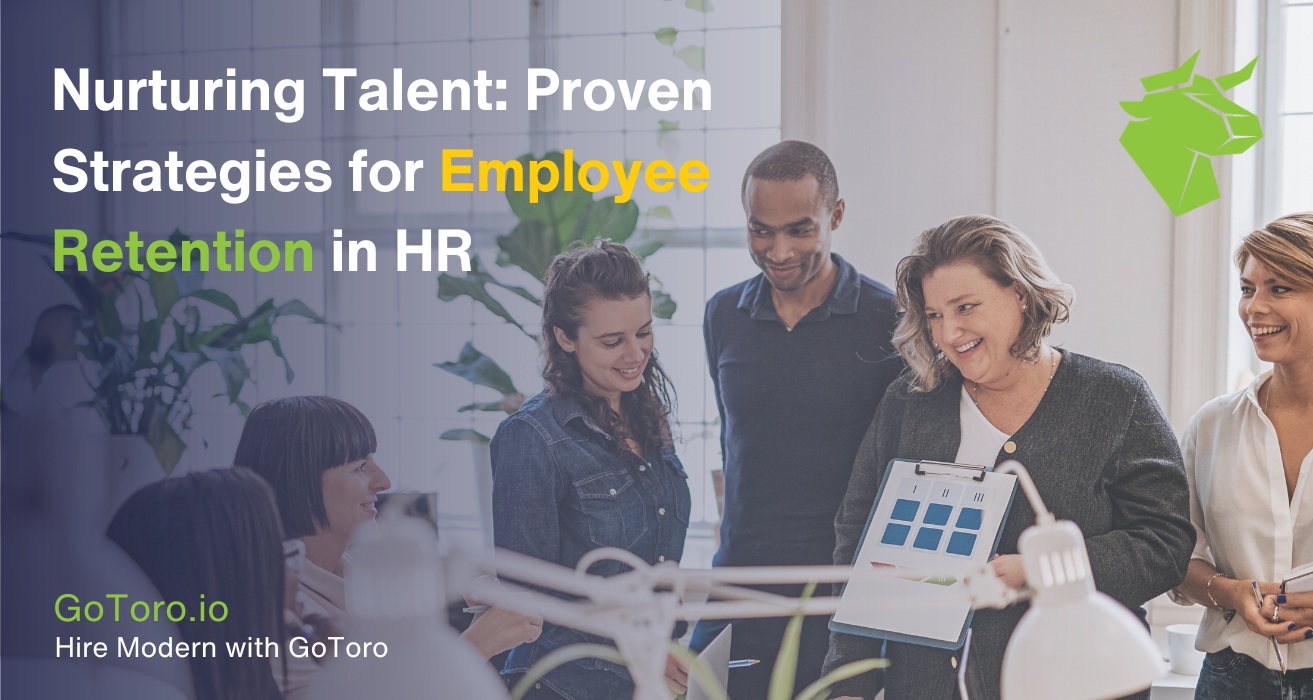Cultivating a Thriving Workforce
The dynamic nature of today’s job market significantly impacts employee retention, posing a challenge for organizations striving to maintain a competitive edge. As the guardians of talent management, Human Resources (HR) departments play a pivotal role in mitigating turnover by nurturing a supportive work environment. This commitment to fostering a thriving workforce is essential, not just for attracting talent but more importantly, for retaining the invaluable human assets that drive organizational success. Effective employee retention strategies are the cornerstone of this endeavor, ensuring that the workforce remains engaged, satisfied, and loyal.

Unveiling the True Cost of Turnover
The journey towards understanding and implementing effective employee retention strategies begins with a comprehensive grasp of turnover’s true cost. These costs are twofold, encompassing the direct financial toll on the organization and the less tangible but equally significant indirect impacts.
Direct costs are the more visible expenses associated with turnover, including the recruitment, training, and onboarding of new hires. These are the upfront costs that organizations often anticipate and calculate as part of the turnover process. However, the iceberg’s hidden mass lies in the indirect costs, which can be more challenging to quantify but have lasting repercussions. The departure of employees results in a loss of institutional knowledge, insights, and skills developed over years of experience. Furthermore, turnover can significantly affect the morale and productivity of remaining team members, creating a ripple effect that touches every corner of the organization.
- In a study by Gallup, it was found that the cost of replacing an individual employee can range from one-half to two times the employee’s annual salary — and that’s a conservative estimate. (Gallup)
Acknowledging the breadth and depth of these costs is a crucial step for HR professionals. It underscores the importance of not only recognizing the financial implications but also understanding the broader impact on organizational culture and employee well-being. This holistic view forms the foundation of strategic HR planning and resilience, paving the way for more targeted and effective employee retention strategies.
Keys to Employee Satisfaction and Loyalty
At the heart of effective employee retention strategies lie the core factors that drive employee satisfaction and loyalty. These include job security, recognition, and a positive work culture, each playing a vital role in how valued and engaged employees feel within their roles.
Job security provides employees with the confidence to invest in their positions and the organization, fostering a sense of stability and commitment. Recognition goes beyond simple accolades, encompassing a culture of appreciation where contributions are regularly acknowledged and celebrated. This recognition reinforces the importance of each employee’s role and their impact on the organization’s success. Lastly, a positive work culture cultivates an environment of support, collaboration, and respect, key ingredients for a satisfied and loyal workforce.
HR departments are uniquely positioned to model these practices, setting the standard for the entire organization. By prioritizing these factors, HR can lead by example, demonstrating the value of each team member and creating a template for the broader organizational culture. This approach not only enhances job satisfaction among HR professionals but also establishes a blueprint for cultivating a committed and loyal workforce across all departments.
Crafting Competitive Compensation and Benefits

In the quest for effective employee retention strategies, crafting competitive compensation and benefits packages stands out as a fundamental approach. This strategy is not just about offering attractive salaries but also about ensuring equity and addressing the diverse needs of HR professionals through thoughtful, innovative benefits.
- 78% of employees reported they’re more likely to stay with an employer because of their benefits program. (United Insurance)
The importance of market research in this context cannot be overstated. An in-depth analysis of industry standards and competitor offerings provides valuable insights, enabling organizations to position their compensation packages competitively. Such research ensures that salaries and benefits not only meet the basic market requirements but also reflect the organization’s commitment to its employees’ well-being and satisfaction.
Innovative benefits play a crucial role in tailoring compensation packages to the modern workforce’s evolving needs. Examples include mental health days, which acknowledge the importance of psychological well-being, and flexible spending accounts, which offer employees control over their health and wellness expenditures. These benefits, among others, cater to the individualized needs of employees, demonstrating the organization’s understanding and support of their diverse life situations and priorities.
Cultivating a Positive Company Culture
A vibrant company culture is the heartbeat of any organization, directly influencing employee satisfaction, engagement, and retention. It’s the foundation upon which successful retention strategies are built, reflecting the values, behaviors, and shared beliefs that characterize an organization.
The Role of Company Culture in Retention
Company culture plays a pivotal role in retention by creating an environment where employees feel valued, supported, and connected to their work and each other. A culture that promotes transparency, recognizes achievements, and encourages professional growth not only attracts top talent but also inspires them to stay. It’s about fostering a sense of belonging and purpose, making employees feel like an integral part of something meaningful.
- 30% of new hires leave within 90 days. The reasons employees leave aren’t a shocker: 43% say the role doesn’t meet their expectations, 34% leave because of a specific incident and 32% don’t think the company culture is a good fit. (Harvard Business Review)
Building a Culture That Retains Talent
Embrace Diversity and Inclusion
A culture that values diversity and inclusivity not only enhances innovation and creativity but also strengthens employee loyalty. When people from various backgrounds feel welcomed and heard, the workplace becomes richer and more dynamic, contributing to overall job satisfaction and retention.
Encourage Open Communication
Open lines of communication between management and employees foster trust and transparency. Regularly soliciting feedback, addressing concerns, and involving employees in decision-making processes reinforce their value to the organization, encouraging a deeper commitment.
Embracing Work-Life Harmony

Effective employee retention strategies also encompass the promotion of work-life harmony, recognizing the pivotal role it plays in employee satisfaction and organizational loyalty. This approach goes beyond traditional work-life balance by encouraging practices that allow employees to blend their work and personal lives seamlessly, enhancing overall well-being.
- 66% of full-time employees in America do not have a work-life balance.
- Spending more than 55 hours a week at work increases the risk of anxiety and depression.
- A whopping 69% of employees want flexible work schedules.
- Mobile technology enables flexible working for 52.59% of employees. (TeamStage)
Flexible scheduling and remote work options stand at the forefront of this strategy. By allowing employees to adjust their work hours and locations, organizations can support a diverse range of lifestyles and responsibilities outside of work. This flexibility acknowledges the complex realities of modern life, offering employees the autonomy to create work schedules that complement their personal needs and preferences.
Encouraging time off is another critical aspect of promoting work-life harmony. Organizations that actively encourage employees to take their vacation time and disconnect from work responsibilities demonstrate a genuine investment in their staff’s well-being. This practice not only helps prevent burnout but also contributes to a more energized, motivated workforce upon their return.
The long-term benefits of embracing work-life harmony are manifold. Employees who feel supported in managing their work and personal lives are more likely to experience higher job satisfaction, reduced stress levels, and a stronger sense of loyalty to their employer. This, in turn, fosters a positive organizational culture that values and respects the individual needs of its workforce, ultimately contributing to enhanced employee retention.
The Power of Engagement: Check-Ins and Feedback
In the realm of effective employee retention strategies, the power of engagement through regular check-ins and feedback cannot be underestimated. These tools are vital for addressing concerns, fostering open communication, and ultimately, creating a culture of continuous improvement and trust within the organization.
Regular, Constructive Check-Ins
The structure for regular, constructive check-ins should be designed to encourage open dialogue between employees and their managers or HR representatives. These sessions are opportunities to discuss not only performance and goals but also any challenges or concerns employees might be facing. Regular check-ins help in recognizing achievements, addressing potential issues early on, and aligning individual objectives with the company’s broader goals. By ensuring these conversations are a two-way street, organizations can cultivate a supportive environment that values each employee’s voice and contributions.
The Role of Feedback
Feedback, both positive and constructive, plays a crucial role in personal and professional development. It allows employees to understand how their work impacts the organization and where there is room for growth. Encouraging a feedback-rich culture promotes a sense of progress and engagement, motivating employees to continuously improve and innovate. By integrating regular feedback mechanisms, companies can foster a dynamic learning environment, driving both employee and organizational success.
Building a Culture of Growth and Development
Another cornerstone of effective employee retention strategies is the commitment to building a culture of growth and development. This focus not only enhances the skill set of the workforce but also significantly contributes to job satisfaction and employee retention.
Professional Development Opportunities
The significance of offering professional development opportunities—such as training programs, workshops, mentorship, and clear career advancement paths—cannot be overstated. These initiatives provide employees with the tools and knowledge necessary to excel in their current roles and prepare for future challenges. By investing in the professional growth of their employees, organizations signal their commitment to the individual’s career and personal development, fostering a loyal and engaged workforce.
Investing in Employee Growth
Investing in employee growth goes beyond the immediate benefits of skill enhancement. It also positively impacts job satisfaction by demonstrating to employees that they are valued members of the organization with clear paths for advancement and improvement. This investment can take various forms, from offering access to educational resources and professional courses to supporting attendance at industry conferences or providing in-house training sessions. Such efforts not only enrich the employees’ professional lives but also contribute to the creation of a more skilled, adaptable, and committed workforce, thereby enhancing overall retention.
Recognizing and Rewarding Excellence

An integral component of effective employee retention strategies is the recognition and rewarding of excellence within the workforce. This acknowledgment not only boosts morale but also significantly enhances motivation across the board.
- 83.6% Of Employees Feel That Recognition Affects Their Motivation To Succeed At Work. (Nectar HR)
Impact of Recognition Programs
Recognition programs, such as “Employee of the Month” awards and performance bonuses, have a profound impact on employee morale and motivation. These programs celebrate the achievements and contributions of individuals, making them feel valued and appreciated. When employees see that their hard work does not go unnoticed, their engagement and productivity levels increase, fostering a positive and competitive environment within the organization.
Creative Recognition Strategies
Exploring creative recognition strategies that align with company values and culture further reinforces the bond between employees and the organization. This could include personalized rewards, peer recognition systems, or opportunities for professional growth. By tailoring recognition strategies to fit the unique culture and values of the company, organizations can create a more meaningful and impactful recognition system. These efforts not only celebrate the achievements of individuals but also promote a sense of unity and shared purpose within the workforce.
Effective employee retention strategies are key to a thriving work environment. As the workforce changes, so must our HR practices. To see these strategies in action and boost your organization’s talent retention, request a demo from Gotoro.


